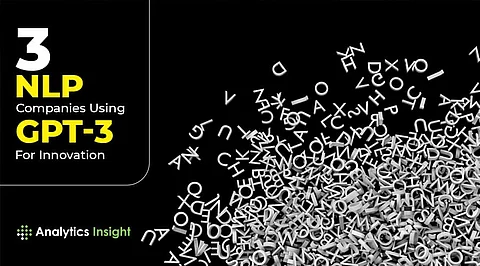
- Insights
- Cryptocurrencies
- Stocks
- White Papers
- Industry
- Geography
- Insights
- Cryptocurrencies
- Stocks
- White Papers
- Industry
- Geography


NLP or natural language processing is a branch of artificial intelligence that is concerned with the interaction between a human and a computer. The easiest example for this is every chatbot you've spoken to on digital platforms. This technology is advancing rapidly, day after day. NLP has applications ranging from spotting fake news to transcribing text to audio, among many others in this digital world. The latest technology of NLP relies on deep learning to collect information from ginormous datasets and train its AI (artificial intelligence) algorithm to create a unique output based on user input. NLP models are used to predict the probability of a sentence existing and being legible which is then tweaked by programmers to train the AI for correct responses.
It is one of the largest language models to be ever created. Here's why it's a big deal – this model consists of 175 billion parameters and 45 terabytes of data. GPT-3's first appearance dates back to 2017 when the Allen Institute for AI published its language model ELMo. Since then many language models were created to optimize for speed, power, and accuracy. But doesn't ELMo seem like a quirky name for a language model? That was the trend at that time until Elon Musk of Tesla broke the convention by naming its generative pre-trained transformer GPT, after the tech's first initials.
GPT-1 was the first iteration that relied on huge, abstract datasets to train the AI with a set of unsupervised parameters which later had to be fine-tuned. The research team at the nonprofit OpenAI, co-founded by Elon Musk figured that increasing the amount of data and parameters by 10 times would make the AI predict sentences with better contextual understanding. This led to GPT-2 and now GPT-3.
OpenAI launched GPT-3 as their own API and allowed other companies to use their software products. GPT-3 is now responsible for many email assistants, language translations, document retrieval, gaming, etc.
The father of modern computer science, Alan Turing, created the Turing test as an imitation test to see if a computer AI is capable of mimicking a human. This test is used by chatbots to examine its capabilities of tricking a human into believing that the chatbot is actually a human. While Hugging Face does not fulfill all those criteria, the company is designing a chatbot that has more understanding than Microsoft and Twitter's bot. This New York-based startup has created a chatbot for bored teenagers that can be their artificial best friends forever or BFF. Hugging Face's team also released an open-source library of NLP applications recently to help boost innovation in this field. Many tech giants like Amazon, Apple, Facebook, and Microsoft are collaborating with the start-up.
Founded in 2019 in Utah, Latitude is an AI-powered company that creates games with unlimited player customization and possibilities. The company recently received funding of $4.1 million to develop their text adventure game AI Dungeon. Gamers can immerse themselves in the world of dragons, magic, and adult fanfiction where players can interact with their social environments for unlimited storytelling experiences, thanks to Latitude's AI and the power of GPT-3.
Based out of LA, OthersideAI is an AI-backed software company that can convert shorthand notes, summaries, and messages into emails. This company has a Chrome extension that applies GPT-3 to transform ramblings into polished emails. Basically, this product acts as an assistant and actually understands what you are trying to say.
The Guardian newspaper gave GPT-3 a shot by prompting the software with a paragraph about the safety of AI. The end-result article did not meet the standard of the publication, sure, but it was at least sensible and comprehensible. While NLP-enabled writing still needs some editor-supervision, this branch of artificial intelligence promises a neat future that can help lazy writers breathe a sigh of relief. In the future, more innovative uses of NLP are yet to come.
